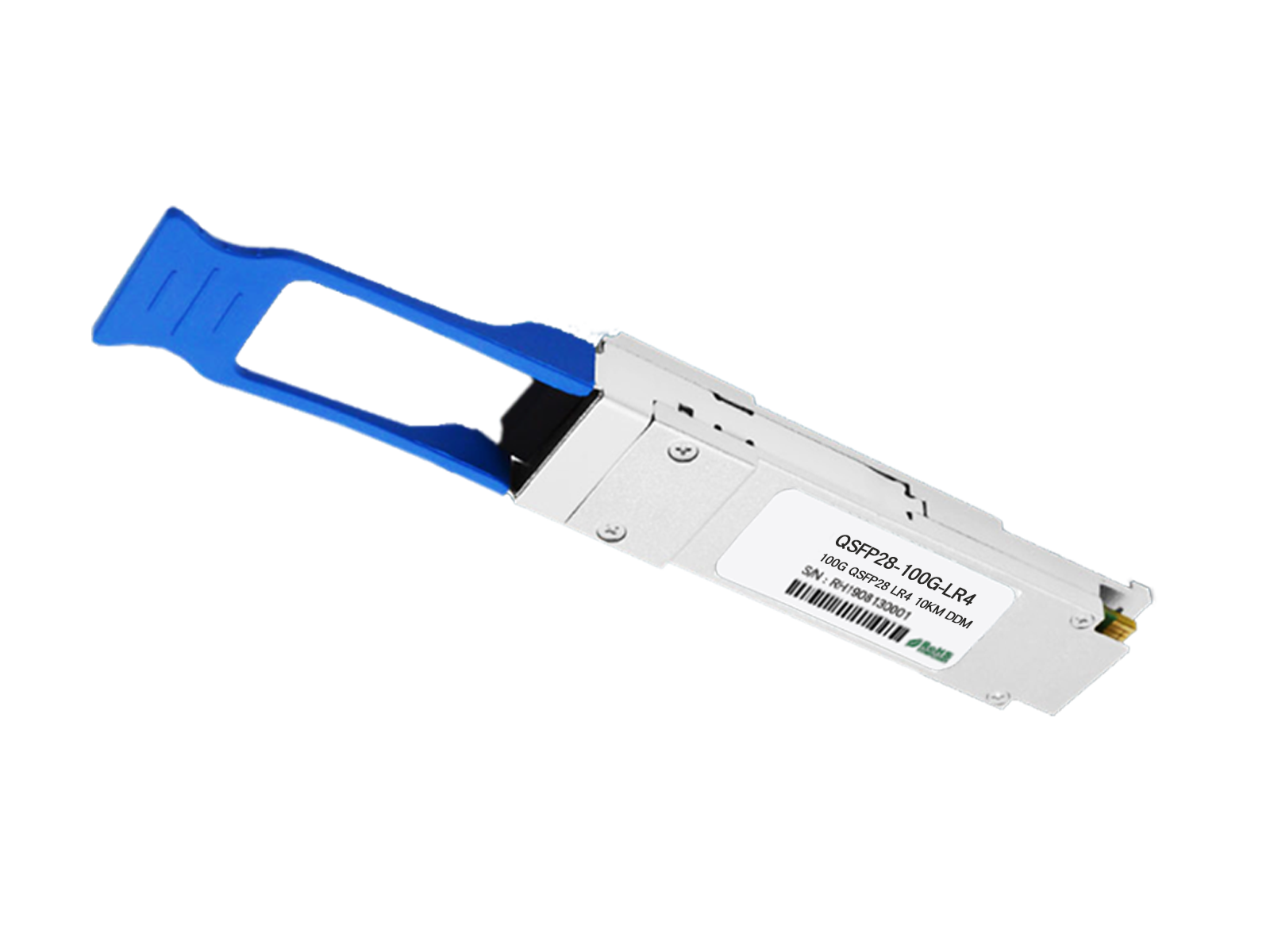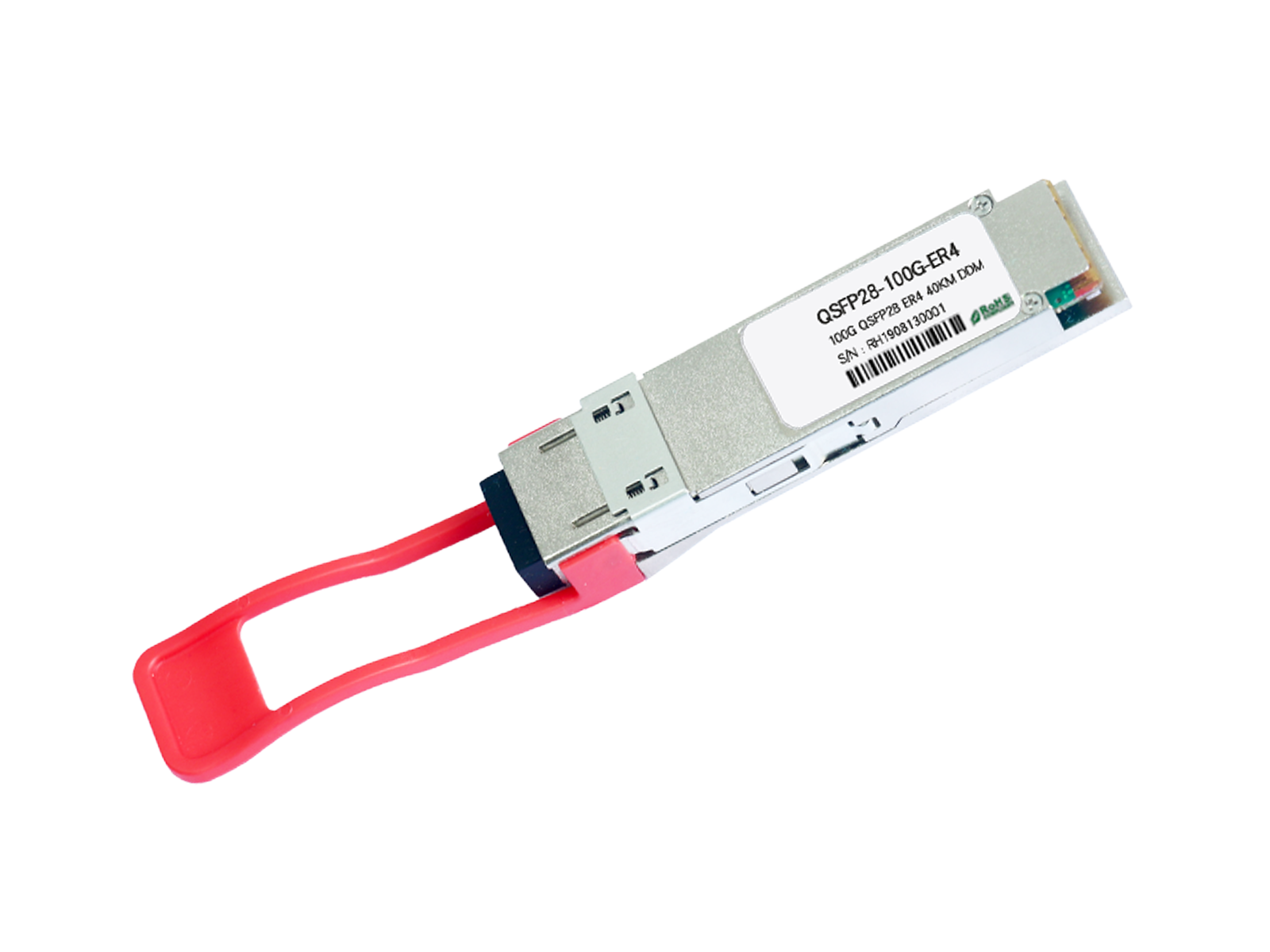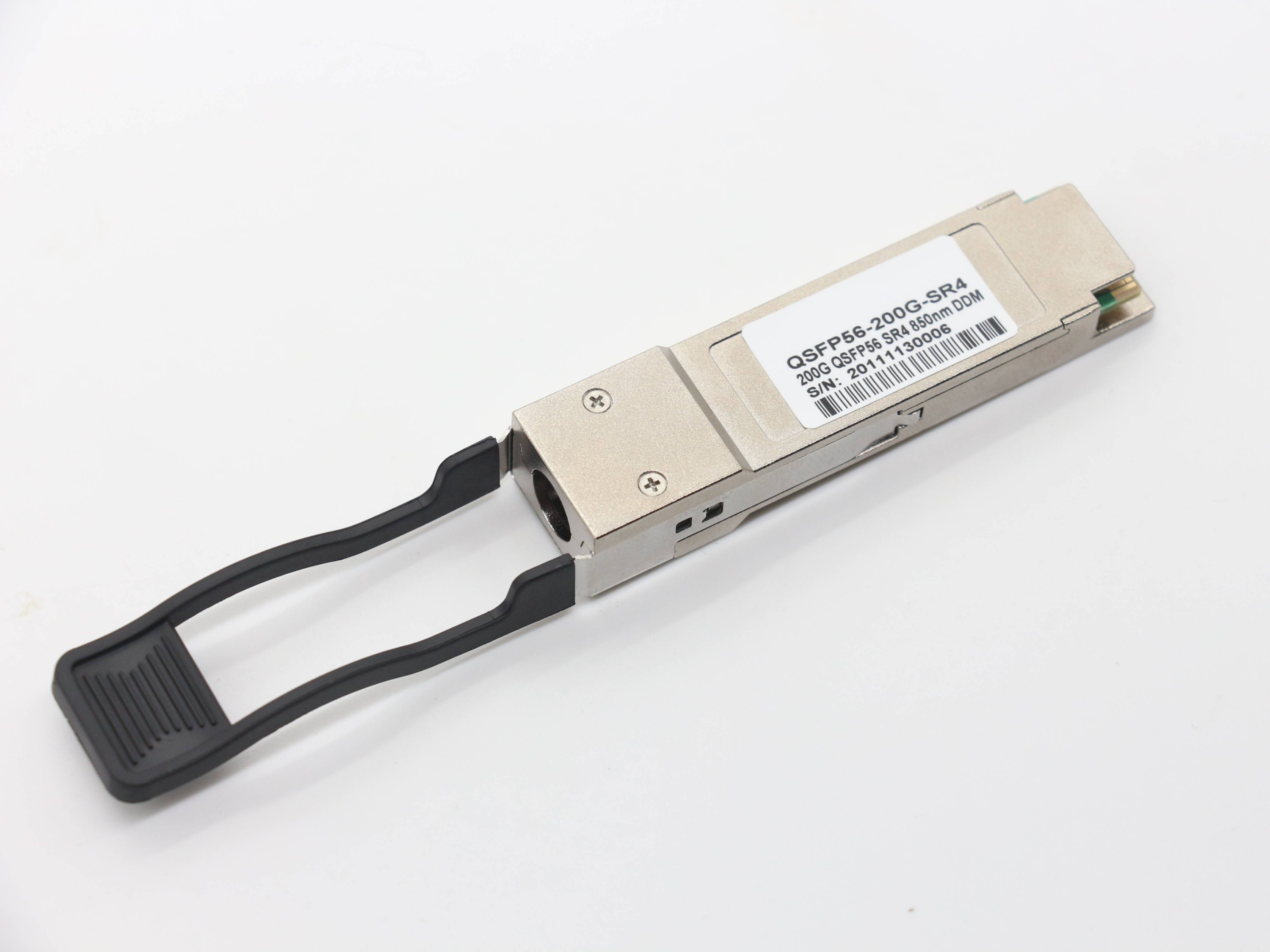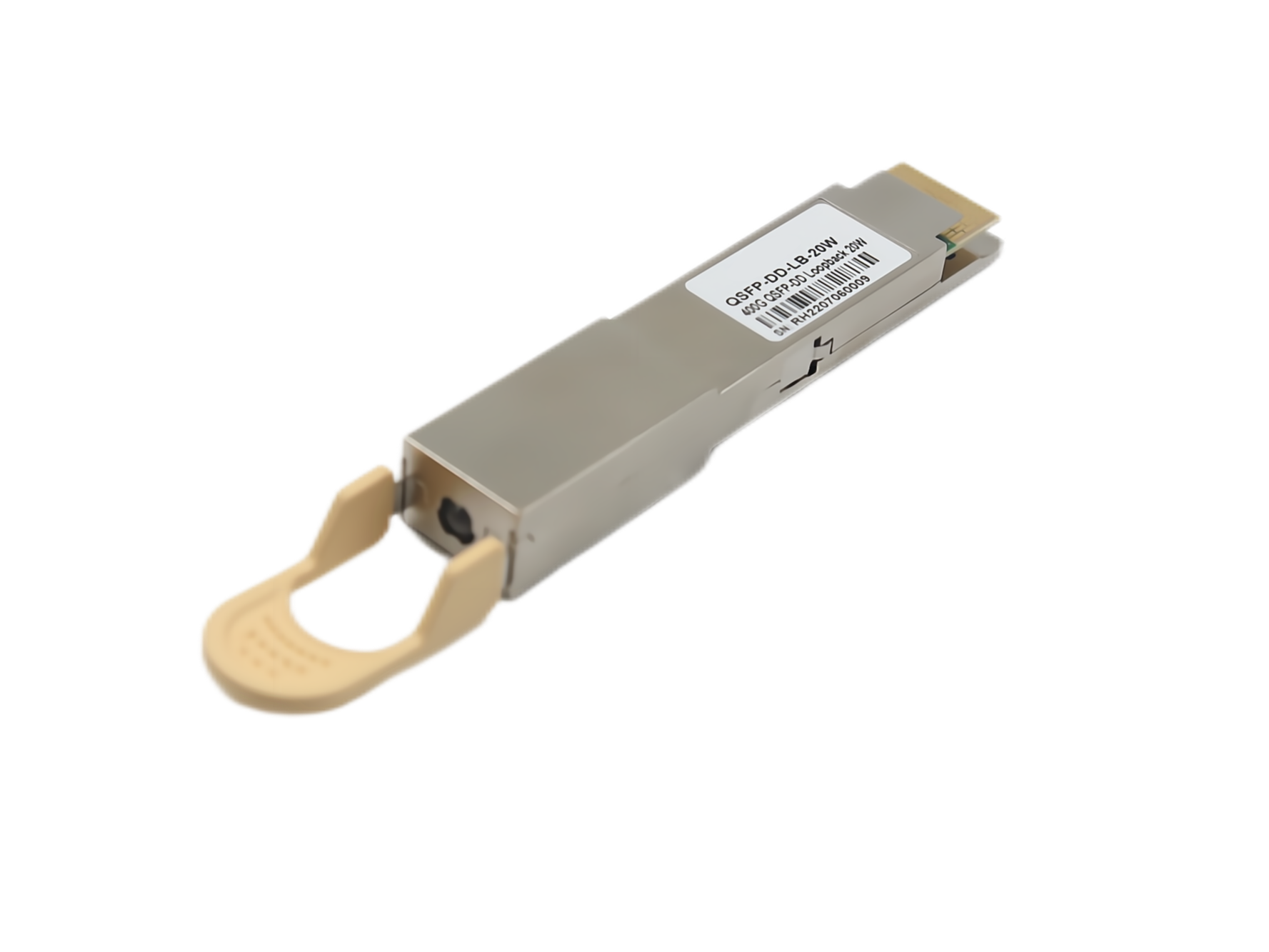Development Trend of High-Speed Optical Transceivers
With the rapid development of optical communication technology, high-speed Optical Transceivers are driving the industry's transformation at an unprecedented speed. Among them, 400G and 800G Optical Transceivers have become the key force leading the development of the communications field with their excellent performance.
Advantages of 400G Optical Transceivers
As an important breakthrough in the field of communications, 400G Optical Transceivers have shown remarkable advantages. According to market research reports, the domestic market size of 400G Optical Transceivers has continued to expand in recent years, reaching 3.3 billion yuan in 2022, and maintaining an annual growth rate of 22%. It significantly improves the work efficiency of data centers and cloud computing with higher transmission rates. Within the data center, a large amount of data needs to be processed and transmitted quickly. The low latency characteristics of 400G Optical Transceivers ensure that data can interact in real time, providing solid support for various online businesses. Whether it is massive cloud storage services or complex artificial intelligence computing tasks, 400G Optical Transceivers can handle it with ease.
Technical characteristics and applications of 400G Optical Transceivers
From a technical perspective, 400G Optical Transceivers use advanced modulation technologies such as PAM4 (4-level pulse amplitude modulation), which effectively improves spectrum efficiency. This enables more data to be transmitted under the same bandwidth resources. At the same time, its excellent heat dissipation design and energy-saving characteristics reduce operating costs and bring higher economic benefits to enterprises.
In practical applications, 400G Optical Transceivers are widely used in high-speed interconnection between large data centers. For example, in the field of financial transactions, every millisecond of delay may lead to huge economic losses. The low latency characteristics of 400G Optical Transceivers ensure the rapid transmission and processing of transaction data, providing reliable communication guarantee for financial institutions. In the data centers of Internet content providers, a large number of user requests and data interactions require efficient network support. 400G Optical Transceivers meet this demand and improve user experience.
The 400G optical transceiver enhances spectral efficiency through PAM4 modulation technology and is widely deployed in large-scale data centers due to its excellent heat dissipation design and energy-saving features. This reduces operational costs while improving data transmission speed and reliability.
The rise of 800G Optical Transceivers
However, with the continuous explosive growth of data volume and the continuous expansion of application scenarios, 800G Optical Transceivers have emerged. 800G Optical Transceivers have not only achieved a huge leap in transmission rate, but also demonstrated new possibilities in technological innovation and application scenarios.
According to relevant statistics, the market size of 800G Optical Transceivers is expected to exceed 11.3 billion US dollars by 2025. 800G Optical Transceivers have become a trend in the development of the industry. Cloud vendors at home and abroad have increased capital expenditures to achieve faster growth. However, at present, although some leading manufacturers in my country can mass-produce 800G Optical Transceivers, the entire market is still in its infancy.
Technical route and application scenarios of 800G Optical Transceivers
In terms of technology, 800G has different technical routes. In terms of equipment, the form of equipment such as switches is not yet perfect. According to Omdia's forecast, in the next few years, although 100, 200, and 400 G Optical Transceivers still have the largest market share, 800 G Optical Transceivers are expected to be put into large-scale market use in 2025.
From the perspective of 800G network architecture, its application scenarios mainly include SR (100 meters), DF/FR/LR (500 meters/2 kilometers/10 kilometers) and ER/ZR (40 kilometers/80 kilometers). In the connection from the top-of-rack switch (TOR) to the Leaf switch, the distance is short. Large Internet companies initially used 100G connection technology, and gradually switched to 200G/400G from 2021. Some companies have already used 800G technology in 2023. The connection from Leaf to Spine switch can reach 2 kilometers or even 10 kilometers. The interconnection between data centers is generally the connection between several adjacent data centers for load balancing or disaster recovery. The connection distance may be tens of kilometers. It is mainly through dense wavelength division multiplexing plus coherent communication to reuse optical fiber resources as much as possible.
The development stages of 800G Optical Transceivers
The development of 800G technology solutions is divided into three generations. The first generation is 8 optical and 8 electrical, the optical interface is 8x100G, the electrical interface is also 8x100G, and it will be commercially available in 2021; the second generation is 4 optical and 8 electrical, the optical interface is 4x200G, the electrical interface is 8x100G, and it is expected to be commercially available in 2024; the third generation is 4 optical and 4 electrical, the optical interface is 4x200G, and it is expected to be commercially available in 2026. At present, the optoelectronic chip devices and equalization technology of single-channel 200G are not mature enough. From the perspective of the electrical interface, when the single-channel rate is the same as the single-channel rate of the optical interface, the architecture of the Optical Transceiver is the best, and it has low power consumption and low cost. The ideal electrical interface of the 8x100G Optical Transceiver is a single-channel 100G, and the ideal electrical interface of the 4x200G Optical Transceiver is a single-channel 200G. In terms of packaging, 800G Optical Transceivers may come in different forms such as double-density quad small form-factor pluggable (QSFP-DD800), octal small form-factor pluggable (OSFP), etc.
Technical solution for 800G Optical Transceivers
There are three main optical interface architectures for 800G Optical Transceivers, namely 8x100G 4-level pulse amplitude modulation, 4x200G PAM4 and 800G coherent Optical Transceivers. The PAM4 transceiver of the 8x100G PAM4 Optical Transceiver runs at 53 Gbd, using 8 pairs of DACs and ADCs, 8 lasers, 8 pairs of optical transceivers, and 1 pair of 8-channel coarse wavelength division multiplexers (CWDM). The PAM4 transceiver of the 4x200G PAM4 runs at 106Gbd, using 4 pairs of DACs and ADCs, 4 pairs of optical transceivers (including 4 lasers), and 1 pair of 4-channel CWDM. The 800G coherent Optical Transceiver uses 4 pairs of DACs and ADCs, 1 laser and 1 pair of optical transceivers. Fixed wavelength lasers can be used in data center coherent Optical Transceivers, which can reduce costs and power consumption.
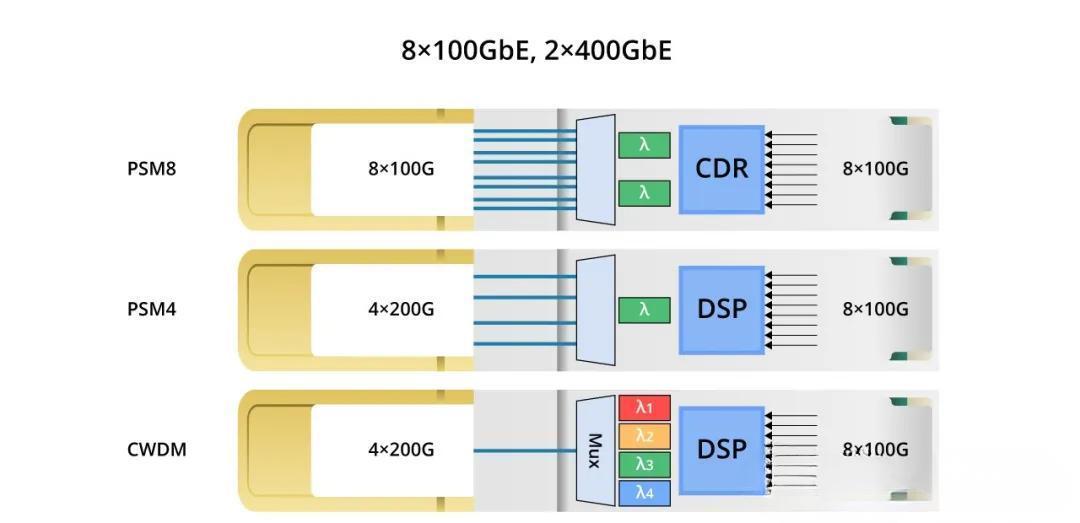
Technical challenges in different application scenarios
The 8x100G direct modulation and direct inspection solution can utilize the existing technical architecture, the relevant technology and standards are relatively mature, and the supply chain is relatively complete. In the SR scenario, VCSEL 100G technology faces some challenges. Improving the performance of multimode solutions and reducing the cost of multimode optical fibers are the keys to the continued development of this technology. Single-mode technologies represented by silicon photonics (SiPh) and directly modulated lasers (DML) are developing rapidly. Among them, SiPh technology is developing faster and may compete with multimode solutions in application scenarios with a transmission distance of 100 meters or less in the future. In the DR/FR scenario, there are three solutions: electro-absorption modulated lasers EML, DML and SiPh. In the LR scenario, there is an 800G LR8 solution based on CWDM, LWDM and nLWDM. In the 4x200G direct modulation and direct inspection solution, single-channel 200G uses PAM4 modulation code type, which can utilize the relatively mature PAM4 industrial basic conditions. In the 4x200G In DR and FR application scenarios, there are two technical solutions: 4-way single-mode parallel (PSM4) and CWDM4, but they still face many challenges. For LR application scenarios, there are 800G LR4 solutions based on CWDM, LWDM and nLWDM, but this solution requires high-bandwidth optoelectronic chip devices, stronger equalization technology and forward error correction (FEC) to ensure the bit error rate (BER) after error correction, and the technical difficulty is relatively high.
In the 800G SR scenario, the technical solutions include DML/EML-based solutions and SiPh-based solutions. The 800G SR8 DML/EML solution uses 8x100G DSP, DML/EML optical chips of the same wavelength, 8 optical fibers (PSM8 parallel single-mode 8 channels) at both ends of the transmission and reception, and 24-core or 16-core MPO connectors. The 800G SR8 SiPh solution uses 8xSiPh MZ modulator/continuous fiber laser (silicon photonics as the transmitter, and the modulator and light source are separated), which can realize a parallel multi-channel shared light source architecture. If the insertion loss is well controlled, 1-2 light sources can be used to achieve 8-way parallel, and the system cost will be greatly advantageous.
Performance of 800G Optical Transceivers in different application scenarios
In the 800G DR/FR scenario, the 4x200G solution is cheaper. The 800G DR4 (EML/SiPh) solution uses 4x200G DSP and 4xEML/SiPh optical chips, which are of the same wavelength. Due to limited bandwidth, this solution does not use DML. The transceiver uses 4 optical fibers (PSM4 parallel single-mode 4 channels) at the same wavelength and 12-core MPO connectors. The 800G 2km (FR) solution uses single-channel 200G PAM4 technology. When the rate increases from 100G to 200G, the baud rate will double and the sensitivity will deteriorate by about 3dB, so a more powerful FEC is needed to keep the receiver sensitive (-4.6dB).
In terms of application scenarios, 800G Optical Transceivers are suitable for ultra-large-scale data centers with extremely high requirements for bandwidth and transmission speed. In these data centers, massive data processing and analysis require fast network response, and 800G Optical Transceivers can meet their stringent requirements. In addition, in the 5G core network, 800G Optical Transceivers also play an important role, providing key support for the realization of high-speed and low-latency 5G communications.
In ultra-large-scale data centers and 5G core networks, 800G optical transceivers adopt a 4x200G scheme and single-channel 200G PAM4 technology. They provide higher bandwidth, transmission speed, and sensitivity, meeting the requirements for fast data processing and low-latency communication.
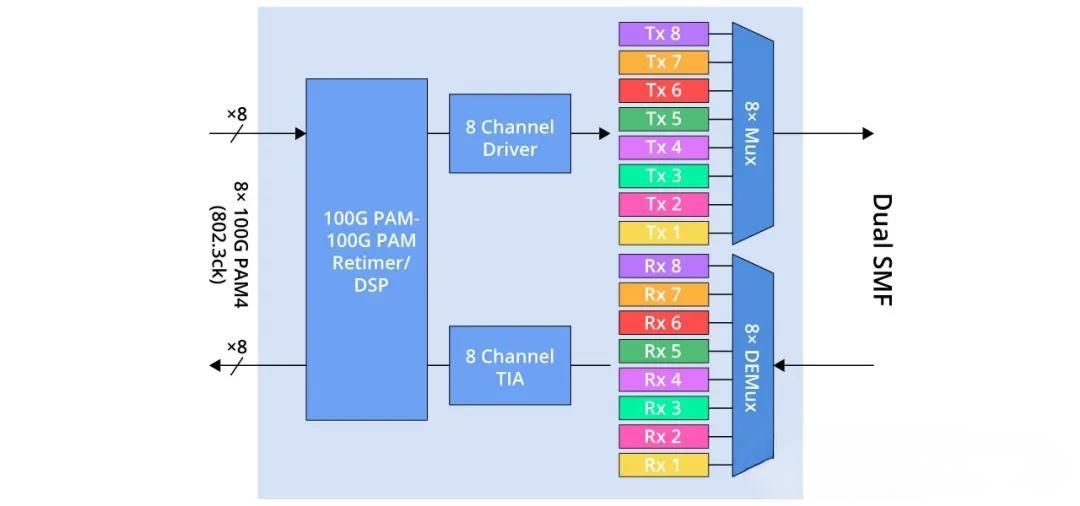
AFuture Development Trends
In the future, 400G and 800G Optical Transceivers will continue to develop in synergy. With its relatively mature technology and cost advantages, 400G Optical Transceivers will be widely used in medium and long-distance transmission and general-sized data centers. 800G Optical Transceivers will gradually become the first choice for ultra-large-scale data centers and application scenarios with extremely high requirements for transmission speed.
At the same time, with the continuous development of technologies such as artificial intelligence and the Internet of Things, the demand for high-speed Optical Transceivers will continue to grow. This will drive continuous innovation in Optical Transceiver technology. For example, the development of CPO (co-packaged optics) technology is expected to further improve the performance of Optical Transceivers and reduce power consumption. In the future, Optical Transceiver technology may also be combined with cutting-edge technologies such as quantum communication to bring more breakthroughs and changes to the communications field. The development of high-speed Optical Transceivers is not only a technological advancement, but also an important force in promoting the digital and intelligent transformation of society. It will play an irreplaceable role in the fields of intelligent manufacturing, smart medical care, smart transportation, etc., and create a more convenient, efficient and intelligent life for mankind.
Summary
As representatives of high-speed Optical Transceivers, 400G and 800G Optical Transceivers are leading the communication field into a new era. They not only bring us faster network speeds and more efficient data processing capabilities, but also lay a solid foundation for future technological innovation. I believe that in the near future, with the continuous breakthroughs in technology and the continuous expansion of applications, high-speed Optical Transceivers will bring more surprises and convenience to our lives and social development.


















